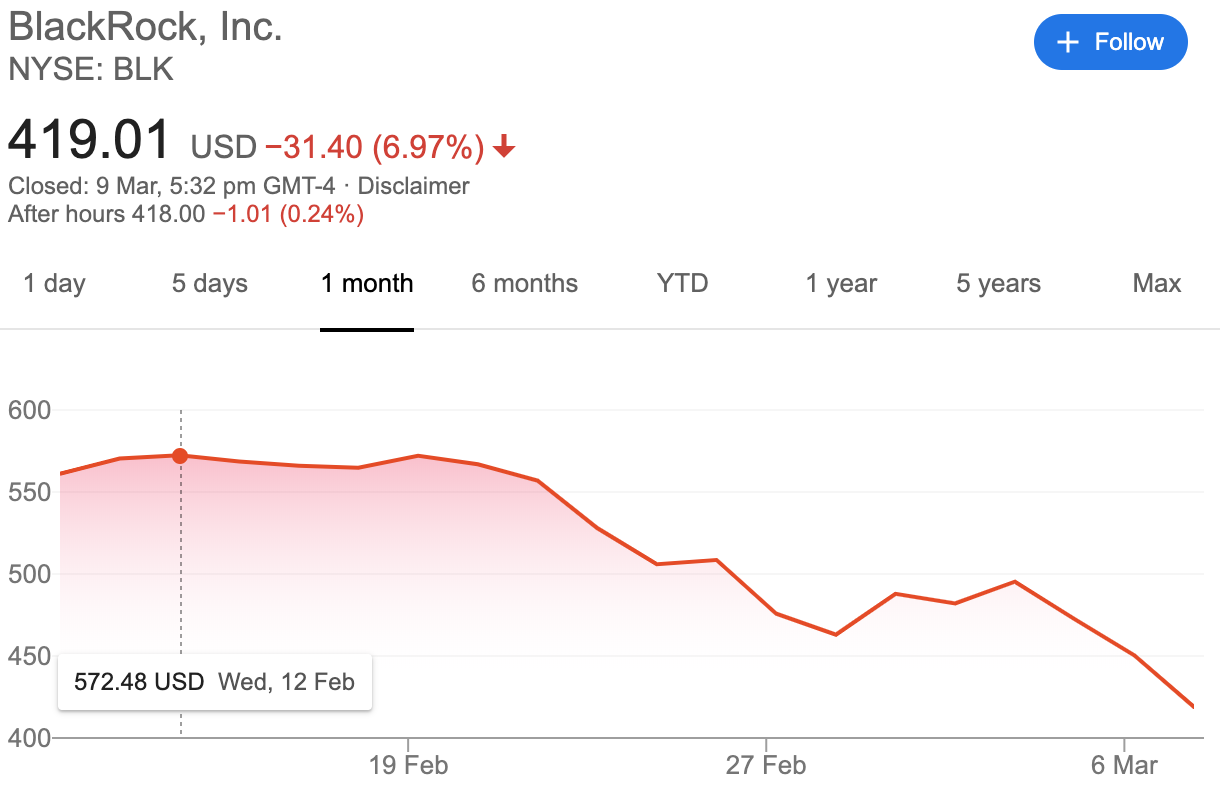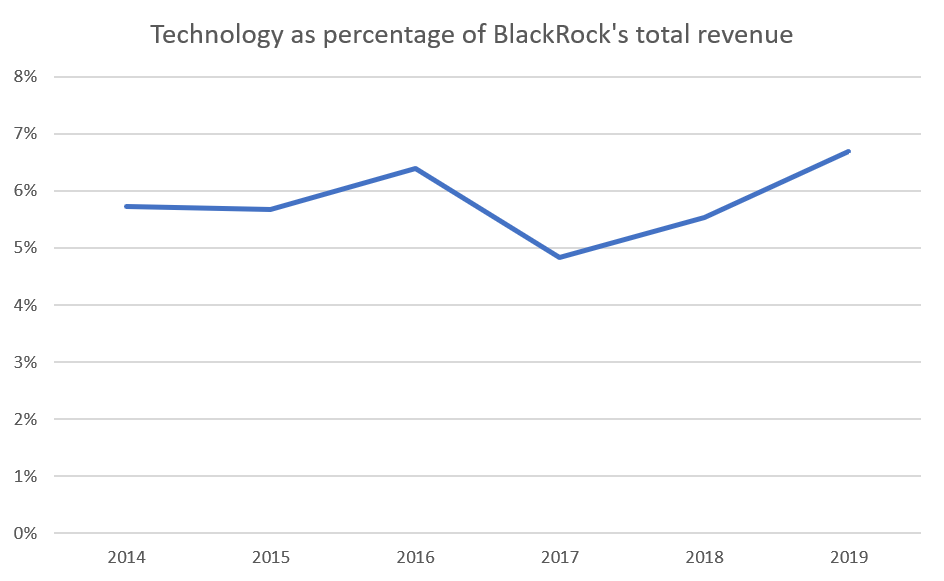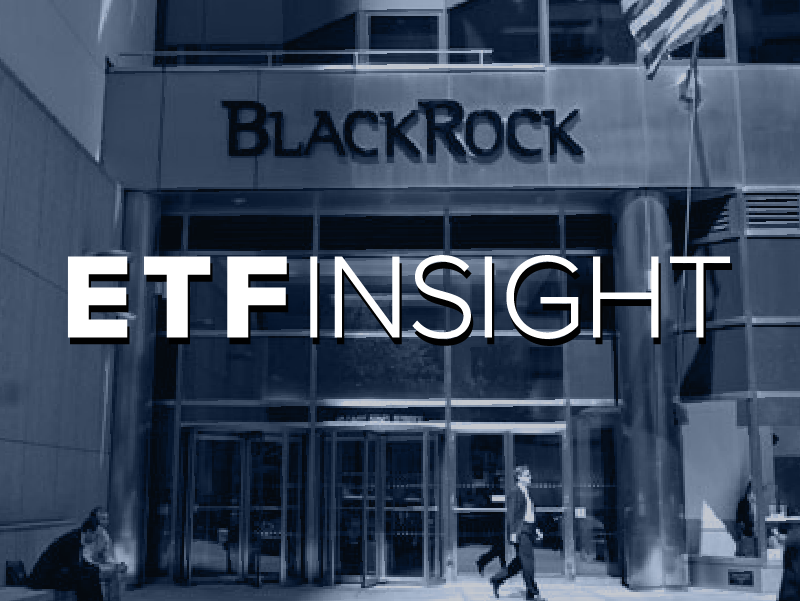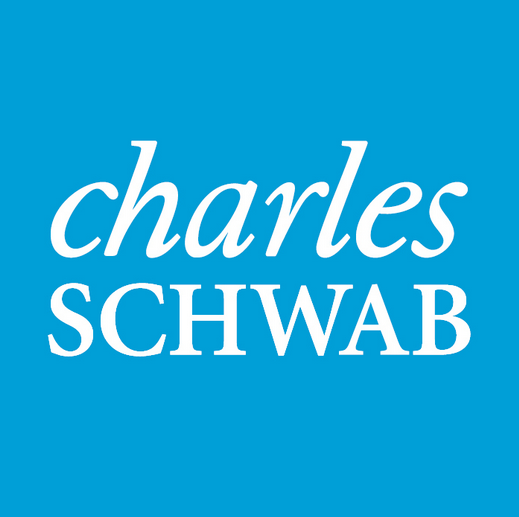Global markets are currently falling at a rate not seen since the Global Financial Crisis so if you are a permanent bull then you are likely to think that all stocks are cheap.
Still, in the land of ETFs, BlackRock is king. And as the coronavirus triggers a dip, could now be a good chance to buy?
BlackRock value
On the surface at least, BlackRock’s shares look cheap. On its current price of $419, the company trades at a relatively low 15 times trailing earnings, according to Morningstar, compared to the 19 times earnings the S&P 500 is currently trading on. Looking at book value – which few use these days – BlackRock looks cheap again compared to the market.
PE ratio (9 March)
PB ratio
BLK
15
1.9
S&P 500
19
2.8
Financials sector
11
1.2
Where BlackRock arguably looks expensive is compared to its financial sector peers. However, as the index measuring this sector is mostly made of banks – which are getting railed by falling interest rates, among other things – perhaps the comparison is not quite fair. Taking a more direct approach, and comparing BlackRock with its competitors, BlackRock seems fairly reasonably valued.
PE ratio (9 March)
PB ratio
Charles Schwab
11
2.1
BLK
15
1.9
State Street
10
0.9
Invesco
9
0.5
Source: Morningstar
Still, the question begs: is this a fair price?

BlackRock's shares have fallen 27% the past month. Source: Google Finance
How BlackRock makes money
BlackRock is an asset manager. It makes most of its money by looking after people’s money – in all kinds of funds, not just in ETFs – and charging fees for the service.
The fees BlackRock charges are calculated as a fraction of assets managed every year – which makes for a fantastic revenue model. This makes them more recurring than discretionary purchases like cinema tickets or shoes. But also means they benefit from compounding, unlike phone bills.

Source: SEC
Because most of the fees BlackRock generates come from stock market funds, when the stock market rises, the firm draws in more fee revenue. This makes forecasting the general direction of the stock market a crucial variable for predicting BlackRock’s profits.
But on the bright side, it means that BlackRock’s profits are easier to forecast.
Tech Revenue
BlackRock makes money in other ways too, such as through subscriptions to its asset management platforms, Aladdin and eFront. These platforms allow big institutions – Apple, Microsoft and Google are among the many clients of Aladdin – to manage their vast treasuries in a single place. These technology subscriptions make up only a small (but growing) portion of BlackRock’s revenue.
Nonetheless, BlackRock’s chairman and CEO Larry Fink has said he wants the firm to make one-third of its money from technology by 2022. This is probably because he sees – like everyone else – the dizzying multiples on which technology companies are trading. To reinforce the optics of this, he ordered BlackRock to set up its Americas headquarters in tech capital San Francisco in 2017.
Whether these technology profits materialise we’ll have to wait and see. For the time being it looks unlikely.

Source: SEC
Modelling BlackRock’s cash flows
So how can we value BlackRock?
The annuity-like fee model means that BlackRock can be valued quite well with a discounted cash flow analysis, the kind that they teach in introductory finance courses.
To do this, an analyst estimates how much profit a company will make in the future, then applies a “discount rate” to its future profits. The discount rate is said to measure the opportunity cost of money.
To this end, I have run three valuations: bear, plain vanilla, and bull. For each, I have done nothing special, and simply used a discount rate over BlackRock’s forecast profits for the next 32-years in an excel spreadsheet.
To measure profits I have used net income. I have then added up the forecast profits over 32-years and applied a discount rate to get the “net present value” – or NPV – of these future cash flows. I have then divided the NPV by the total number of shares on issue.
I have chosen a 32-year time horizon because BlackRock is 32-years-old. I figure the company has lasted 32-years thus far; it can survive another 32. The discount rate is 6.5%, as recommended by KPMG.*
Bear case – profits mildly decline – target price $349
For the pessimistic forecast, which is the worst case scenario for BlackRock I can reasonably see occurring, the target price is $349. For this, I have made a series of pessimistic assumptions on the revenue side. I have assumed that asset management revenue will grow at nearly half its 5-year average rate and the technology fee growth rate will be flat. Meanwhile, I have kept the growth of expenses all in line with their historical averages.
Total forecast cash flows ($m 32 years)
$131,308
Discount rate*
6.5%
NPV ($M)
$54,886
Shares on issue (million)
158
NPV per share
$349
Current share price
$419
Plain vanilla – profits grow in line with inflation – target price $495
For the plain vanilla forecast, I have modelled BlackRock’s profits to simply rise in line with the 2019 inflation rate (2%) over the next 32 years, at which point the company stops existing. (Rather than getting acquired or merging). On this basis, BlackRock looks cheap.
Total forecast cash flows ($m 32 years)
$212,875
Discount rate*
6.5%
NPV ($M)
$77,907.87
Shares on issue
157.459546
NPV per share
$494.78
Current share price
$419
Bull case – profits grow at half their 3-year average – target price $626
For the optimistic forecast I have assumed that BlackRock’s profits continue to grow at half their 3-year average of (6.74% is the 3-year average; I’ve used 3.87%).**
I take this as optimistic because I believe that it is highly unlikely that BlackRock’s profits will grow over the next 32 years at even half the rate they have for the past 3 years. On this basis, BlackRock’s shares look very cheap indeed.
Total forecast cash flows ($m 32 years)
$296,169
Discount rate*
6.5%
NPV ($M)
$98,596.39
Shares on issue
157.459546
NPV per share
$626.17
Current share price
$419
Valuation – BlackRock is cheap, but what are the risks?
On these back of the envelope calculations, BlackRock looks cheap and the market is pricing in sub-inflation profit growth or somewhat serious risks. So what might the risks be?
Risk: Vanguard and fee compression
The most obvious is BlackRock’s strategic position. That is, the company is in a state of structural competition with Vanguard, a not-for-profit bent on bringing fees to zero.
Similarly, broker dealers such as Fidelity and Charles Schwab are now providing index funds for free or close thereto. Index funds – which are now available for free – make up a core revenue source for BlackRock.
This risk of fee compression is the reason the market sold down BlackRock so heavily in 2018, after Fidelity rolled out its zero fee index fund.
Risk: Performance fees disappear
Another risk is that performance fees – unpredictable at the best of times – simply disappear. Stock picking is getting harder and harder; BlackRock has benefitted from this with the rise of its passive iShares business. As stock-picking gets harder, so too does performance fee revenue.
While performance fees make up a minority of BlackRock’s revenue, their total revenue contribution the past 5 years has been similar to Aladdin. If performance fees go, which they may, then it’s a substantial loss of revenue (and margin contribution) for BlackRock.
Risk: Stock market is overvalued or declines
Because BlackRock is an asset manager its fate is tied to the stock market. When the stock market falls BlackRock takes a double hit: its stock price tends to fall (beta) and its fee revenue falls too as the value of the assets it managers fall. For this reason, if the stock market continues falling – which it may – then BlackRock could get hit.
Tailwinds
That said, there are also tailwinds that BlackRock will likely benefit from. These include the growing electronification of the bond market, which will greatly benefit iShares fixed income ETFs. This will have the added benefit of diversifying BlackRock’s asset base.
Another tailwind is the competitive position of Aladdin, which is very tricky to disrupt due to the costs and effort involved in switching platforms. (BlackRock has easier access to big companies like Apple that use its platform, as its passive investments make it one of their biggest shareholders).
Conclusion: BlackRock is cheap, but stock markets are irrational
They say that stock markets are emotional in the short term, and rational in the long term.
On the analysis here, BlackRock at $419 is cheap. The market is pricing in virtually no profit growth and a good bit of risk, betting the company won't' be around for more than 30-odd years.
At the time of writing, there are more burning questions for BlackRock’s shareholders. They are: which way will interest rates go (to zero?) and will the Trump tax cuts survive if a Democrat gets elected. These effect not just the value of BlackRock’s shares, but the whole stock market.
______________________________________________________
* This represents the risk free rate (1%, Fed Fund’s rate) and 5.5% equity risk premium.
** I’ve used operating income growth rate as net income growth rate has been distorted by Trump’s tax cuts.
[Editor's note: this article has been updated following the 9 March sell-off.]
ETF Insight is a series brought to you by ETF Stream. Each week, we shine a light on the key issues from across the ETF industry, analysing and interpreting the latest trends in the space. For last week’s insight, click here.







